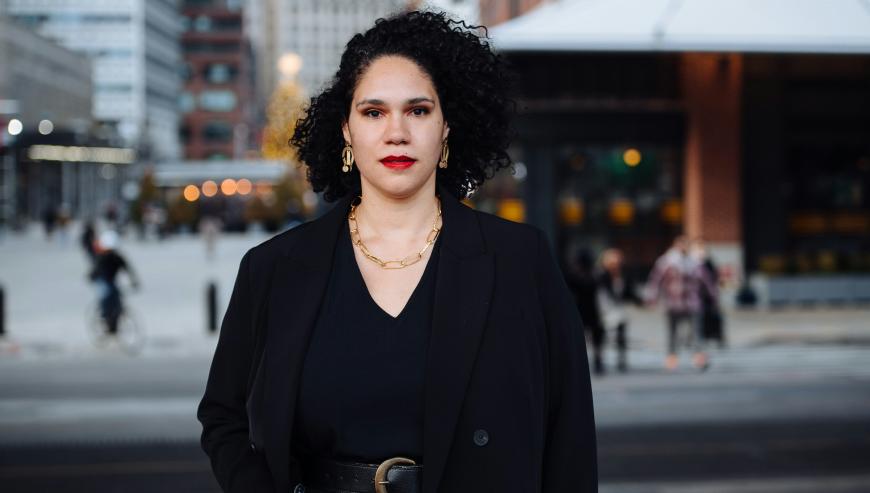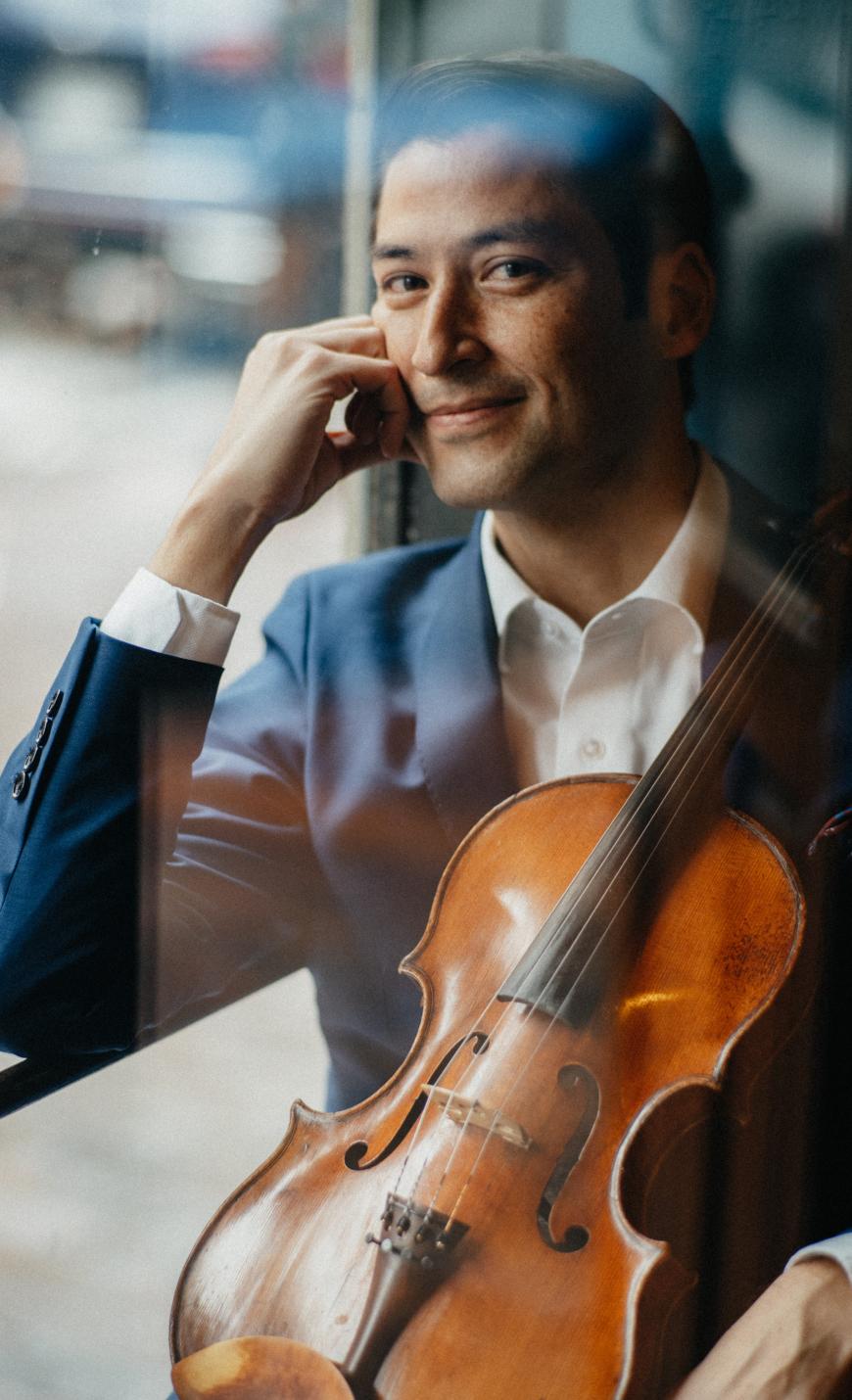
At age of 4, Jessie Montgomery met Masumi Per Rostad at Third Street Music School, where they both studied string instruments. Montgomery started composing at 10. She grew up on the Lower East Side of New York and has described the neighborhood as the soul where her music is generated. It’s fitting, even poignant, then, that Montgomery has composed a concerto, L.E.S. Characters, for her childhood friend Rostad, now a Grammy Award-winning violist. It’s a musical tribute to prominent artists on the Lower East Side in the 1980s who shaped Montgomery’s and Rostad’s formative years.
Co-commissioned by Los Angeles Chamber Orchestra with the Grant Park Music Festival, Orlando Philharmonic Orchestra, CityMusic Cleveland, and Interlochen Center for the Arts, the concerto received its West Coast premiere from LACO, with Music Director Jaime Martín conducting, on April 22 at UCLA’s Royce Hall and on April 23 at Glendale’s Alex Theatre.
“There’s something about recalling childhood memories that I find is a fun place to write music from because it’s like a good exercise in tapping into your creative memories and impulses,” said Montgomery. “So I like writing from a memory of childhood. It’s free — there’s no restraint — and it’s also filled with nostalgia, a little bit of pain, and a little bit of excitement, and there’s that childlike wonder of it all.”

During his childhood, Rostad shared a back door with the iconic music club CBGB and recalls the punk music thrumming from below. He describes the Lower East Side in the 1980s as “a neighborhood full of artists and derelicts and people on the margins of society,” all living in an area that was affordable but also teeming with lost real estate, empty lots, and crumbling buildings.
“What Jessie, I think, was seeking to do with this work was to examine the points of beauty that arose out of that,” said Rostad.
Primary among the figures in L.E.S. Characters is an artist both Montgomery and Rostad remember as “The Can Man,” who inspired two movements that bookend the concerto. Montgomery recalls the man riding a unicycle around the Lower East Side and dressed up in aluminum cans. While composing, she was inspired by “the sort of magic and whimsy of that image.” Rostad remembers him as the “kind of crazy thing that we would see that would be just sort of somehow normal and also fantastic.” Montgomery weaves “The Can Man” music as a thread, repeated later in a movement called “Garbage Art,” which includes an instrument made of a tin garbage pail with aluminum cans inside of it — a literal reference and nod to what Montgomery describes as an “artistic playfulness that was very present in a lot of people’s artworks.
“A lot of the art [of that place and time] reflected finding the community and finding the beauty in that debris,” said Montgomery. “We were being bred in that environment, so finding the beauty in something that’s broken is definitely a thread in the piece.”
Consider the “Mosaic Man,” another figure in L.E.S. Characters, whom Montgomery recalls as taking bits of broken, discarded tile and making mosaics all over the Lower East Side. Rostad remembers those creations as filling in sidewalk gaps, cracks in building, and sometimes large murals. Montgomery wrote the movement to be colorful and bright and as a musical acknowledgement of the beautifying of broken places.
Composing with Rostad and viola in mind, Montgomery describes the experience as coming full circle and as joyful and affirming. “The fun thing is the contrast between how that neighborhood was when we were kids — and how we grew up in that neighborhood — and then this super strict formality of classical music, and the juxtaposition of those two worlds is something we both share,” she said.
Montgomery, a violinist, sought to create a score that makes a real subject and storyteller out of the viola, not your typical concerto instrument. Rostad describes the voice of the viola as “in between things and sort of unexpected” and one that doesn’t naturally project well over an orchestra, offering compositional challenges that he eagerly applauds Montgomery for conquering, allowing his instrument in L.E.S. Characters to “emerge through an orchestra.”
“The viola is a little bit more subdued and naturally has to fight a little harder when it comes to balancing. There’s something about that, too,” said Montgomery. “It requires some restraint in the orchestration, but also there’s this effect that the viola has of trying to be heard in a way that I find to be really beautiful, and it especially draws you in as a listener.”
Rostad explained how the size of a viola is not codified the same way as a violin or cello, with the length of the instrument’s body ranging from 15 to 18½ inches, and how that can yield a kind of grappling with identity. He also said, “One of the things I appreciate about what violas are and what violists are today is that we are allowed to be very different. We come in all shapes and sizes, and that has a strong tonal implication as well.”
The viola becomes each of the characters in Montgomery’s concerto, just as the composer says of Rostad, “He is the ‘Mosaic Man.’ He is ‘The Can Man.’ He is ‘The Poet’ and the teacher. He is the thread that holds the ‘Garbage Art’ together.”




